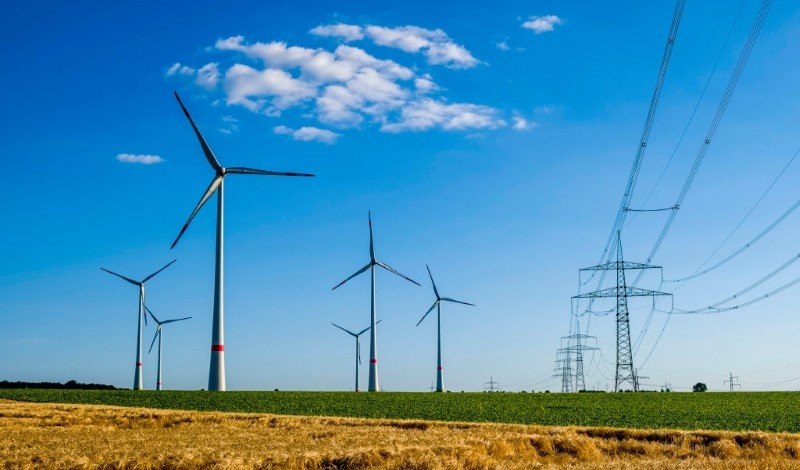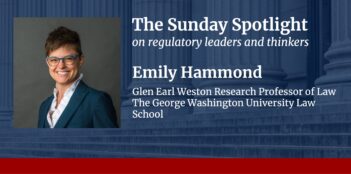
FERC publishes final rule aimed at expediting the interconnection of new power plants.
The amount of generating capacity waiting to interconnect to the U.S. electric grid grew 40% year-over-year in 2022. According to a report published by experts at the Lawrence Berkeley National Laboratory, that increase brought the total amount of pending projects to nearly 1400 gigawatts—enough untapped energy to power 130,000 homes for a year.
And backlogs are getting worse in interconnection queues across the country. In 2015, the average power plant waited less than two years for approval to interconnect; by 2022, that wait time had doubled. Furthermore, the Inflation Reduction Act (IRA) has spurred even greater investment in the development of clean energy projects over the past year. With no end to development in sight, early moving grid operators had begun to adopt piecemeal reforms that were designed to reduce backlogs. In response to these market conditions, the Federal Energy Regulatory Commission (FERC) announced over the summer that it would require grid operators to implement a suite of reforms to their interconnection procedures to tackle these problems in a more uniform manner.
In early September, FERC published Order No. 2023—a final rule intended “to address interconnection queue backlogs, improve certainty, and prevent undue discrimination for new technologies.” The final rule requires all public utilities to adopt revised standard generator interconnection procedures and agreements.
In a presentation of the final rule to FERC’s Commissioners and the public, FERC staff explained that the reforms required by the rule are designed to ensure that new generation resources can connect to the grid more efficiently. To improve efficiency, Order No. 2023 requires all transmission providers under FERC’s jurisdiction to use a “cluster study” process. Cluster studies allow grid operators to evaluate the impact that a group of new generation projects will have on the existing transmission system collectively, rather than evaluating impacts on a project-by-project basis. The final rule also requires grid operators to collect more money as collateral from projects developers than current rules compel. To improve the timely completion of interconnection studies, Order No. 2023 imposes strict study deadlines on grid operators and sets out sizeable financial penalties for failing to meet those deadlines.
The final rule received unanimous support from the Commission. FERC Chairman Willie Phillips emphasized that the nation’s “transmission policies must keep pace with the rapid changes in the makeup of our power generation resource mix,” calling the rule “an important milestone” in that process. Commissioner Allison Clements concurred, explaining that the final rule will “widely extend proven best practices to utilities around the country.”
Commissioner Mark Christie agreed, adding that the final rule represents “major progress” toward allowing commercially viable projects to move forward more quickly. And even Commissioner James Danly, known for his sometimes-sharp dissents, took a more moderate tack, explaining that he was satisfied that the final rule conformed with the Commission’s legal obligations.
Both Commissioner Christie and Commissioner Clements emphasized that although Order No. 2023 represents a major improvement in generator interconnection policy, more work remains. For example, Commissioner Christie focused his concurring statement on cost allocation issues, explaining how he would divide the costs of interconnection studies among multiple transmission owners and also questioning how grid operators would ultimately pass certain assigned costs through to their customers. Commissioner Clements called for grid operators to link improvements to the interconnection study process with the development of a more holistic understanding of transmission system needs. And both Commissioners highlighted that grid-enhancing technologies should be used more frequently to maximize use of existing grid infrastructure.
Industry groups reacted positively, if cautiously, to initial news of the final rule. Experts from the Rocky Mountain Institute, a nonprofit organization working to accelerate the clean energy transition, hailed the rule as “an important step in the right direction,” but noted that queue backlogs persist, even in regions of the country that have already adopted procedures that resemble the new reforms. The Edison Electric Institute, a trade organization that represents many of the nation’s investor-owned utilities, expressed measured optimism about the rule, noting that its utility members would “lead the charge” in ensuring that new electric generation could connect to the grid safely and efficiently.
In addition, commenters broadly agree: the reforms required by Order No. 2023 arrived not a moment too soon. As Tony Clark, a former FERC commissioner and former Chairman of the North Dakota Public Service Commission, remarked, the IRA subsidies are “pouring jet fuel on that raging queue fire.” If interconnection reforms were needed before the passage of the IRA, these changes are doubly necessary now that generous subsidies have accelerated the pace of clean energy project development.
In recognition of the urgent need for reform, FERC set an ambitious timeline for transmission owners to comply with the rule. Order No. 2023’s publication started a countdown clock: the rule becomes effective on November 6, 2023, with compliance filings due 90 days after that. Although achieving full compliance may require grid operators to submit several rounds of reform proposals, they can begin filing as early as December 2023. Once approved, these reforms could bring needed relief to projects waiting for the green light to interconnect.



